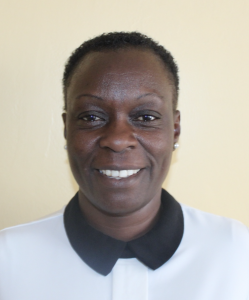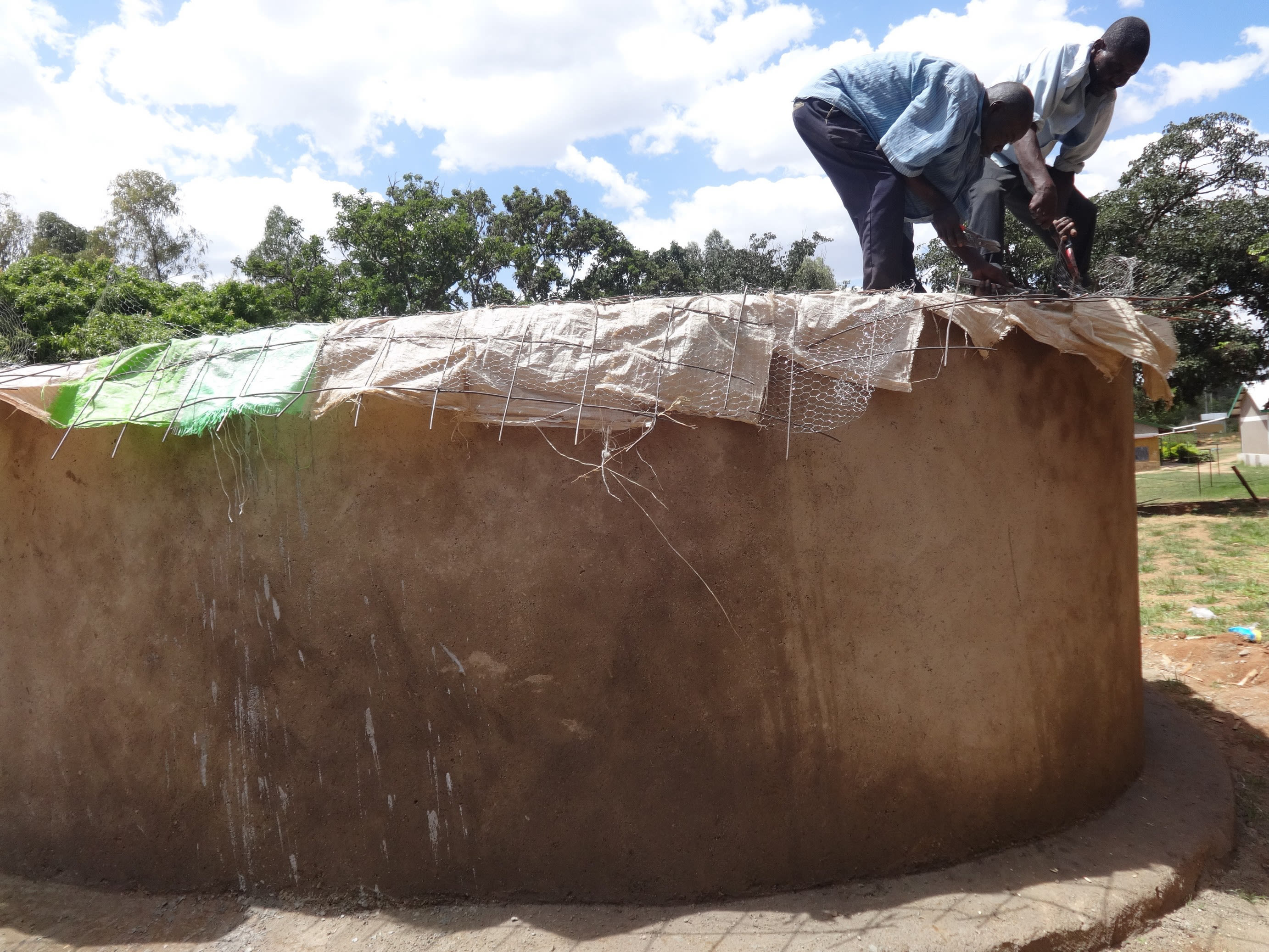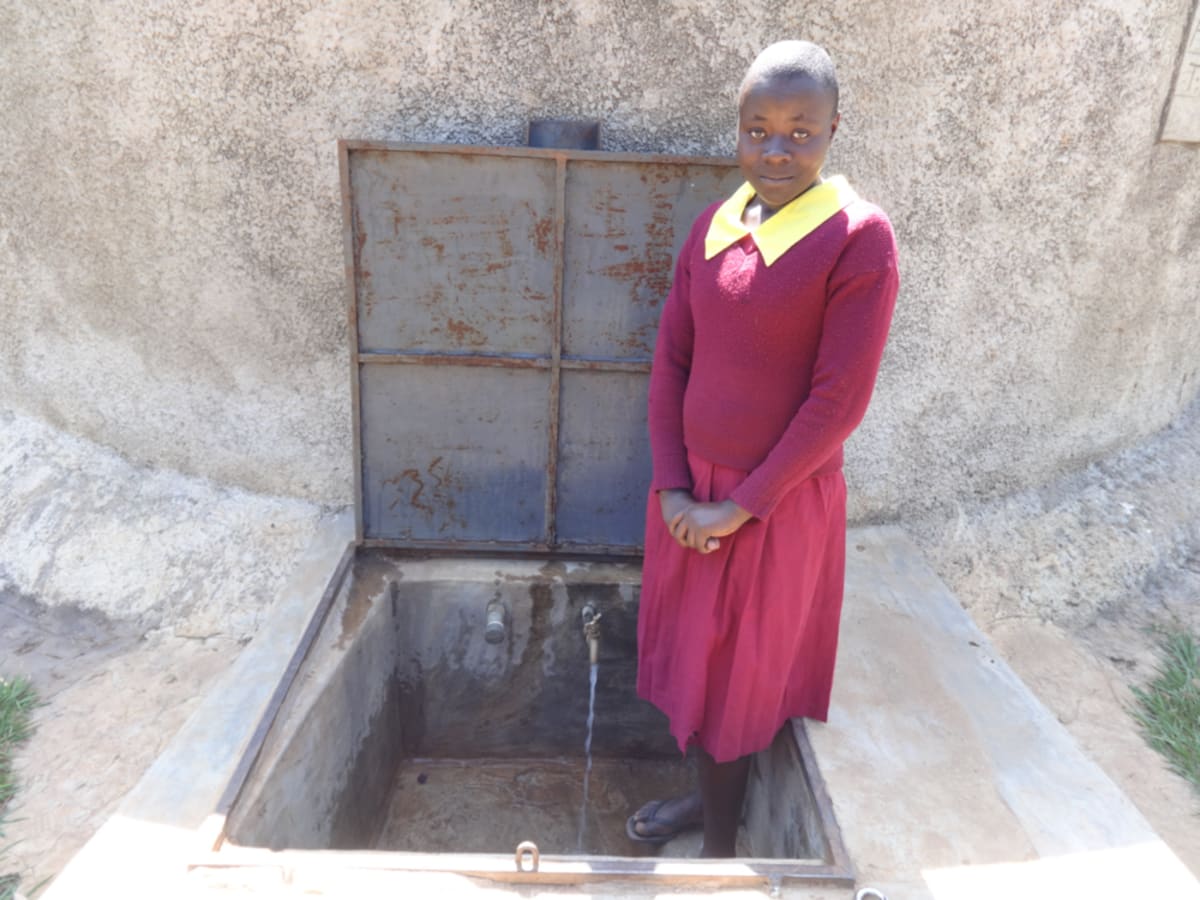St. Joseph Shibinga Primary School was established in 1974 by the late Nicanor Bwakali. The school is growing too fast, really. The enrollment was 1,550 students in 2018. Due to a continued record of good performance, parents keep bringing new students to this school.
It was a cold morning during our first visit, made even colder by the fact that motorbikes are the best way to traverse the roads leading to Shibinga. This is a rural area, and it's very peaceful. During our visit, most of the land has just been planted with maize and beans.
The school has a small plastic tank that they catch rainwater in. This water does not last long, so students are sent out to find water to meet their needs. They leave school and walk 400 meters to an open water source called Nalianya Spring. This interrupts class time and tires the students out.
But one of the worst parts about this walk for water is that students have to cross a busy road on the way there.
According to the headteacher, Mr. Richard Wafula, not having enough water has greatly endangered his students. "One student of class four was hit by a motorcycle as he went out to fetch water from the unprotected spring," Mr. Wafula recounted. Beyond the dangerous journey, dirty water from this spring causes waterborne diseases among his students.
What we can do:
The student population is high and the toilets are few. There is only one handwashing facility available. Even if there were more places to wash hands, the water would not be sufficient. There is quite a lot to be done in terms of improving the hygiene and sanitation standards at the school. There is a great need for training both pupils and teachers on hygiene and sanitation information.
Training
Training on good hygiene habits will be held for two days. The facilitator will use PHAST (participatory hygiene and sanitation transformation), ABCD (asset-based community development), CTC (child to child), lectures, group discussions, and handouts to teach health topics and ways to promote good practices within the school. The CTC method will prepare students to lead other students into healthy habits, as well as kickstart a CTC club for the school.
Handwashing Stations
This CTC club will oversee the new facilities, such as handwashing stations, and make sure they are kept clean and in working condition. The two handwashing stations will be delivered to the school, and the club will fill them with water on a daily basis and make sure there is always a cleaning agent such as soap or ash.
VIP Latrines
There are only nine latrines for the 1,550 students here. That means there are 172 students using just one latrine.
Two triple-door latrines will be constructed with local materials that the school will help gather. Three doors will serve the girls while the other three serve the boys. And with a new source of water on school grounds, students and staff should have enough to keep these new latrines clean.
Rainwater Catchment Tank
"I have been waiting for such support for the school for a long time. We are ready to give our contribution to enable the completion of the projects," said an excited Mr. Paul Olwichi, the deputy headteacher at the school.
In order to ensure students have water at both school and at home, we are not only building a rainwater system but are working to transform Nalianya Spring into a clean water source as well.
A 50,000-liter rainwater catchment tank will help alleviate the water crisis at this school. The school will also help gather the needed materials such as sand, rocks, and water for mixing cement. Once finished, this tank can begin catching rainfall that will be used by the school’s students and staff.
We and the school strongly believe that with this assistance, standards will significantly improve. These higher standards will translate to better academic performance!

 Rainwater Catchment
Rainwater Catchment
 Rehabilitation Project
Rehabilitation Project



































